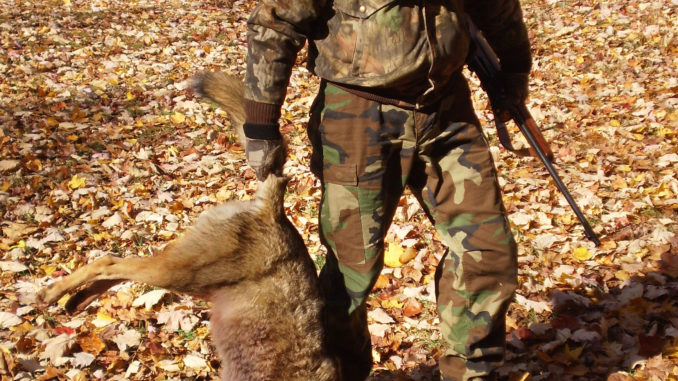
Biologist Charles Ruth of the S.C. Department of Natural Resources said there are two things we know about coyotes: One, they are here to stay; and two, they are a major predator on fawn deer.
A non-native species, coyotes arrived in South Carolina over the past several decades two ways — by natural migration from western states and via illegal importation. Coyotes were first documented in Pickens and Oconee counties in 1978 and were thought to be linked to animals that were illegally imported for hunting purposes.
By the early 1980s, coyotes were documented in counties in the Western Piedmont along the Savannah River drainage, and by the late 1980s they were found all the way across the state in the Pee Dee Region. By the mid-1990s, coyotes were found in all 46 counties.
Although the coyote’s main diet is composed of small mammals (rats and mice), insects and a variety of vegetable matter including fruits, they will take deer fawns and sick or injured deer. The impact on deer populations has been documented in a multi-year study on the Savannah River Site in Aiken County.
“The first three years of the study were to determine the baseline fawn mortality, or survival rate,” Ruth said. “In doing that, we determined that through all causes we are losing 70 percent of fawns and that 80 percent of that was due to predation by coyotes.”
The second phase of the study, he said, was to determine whether or not controlling coyotes would increase fawn survival.
“We went through that process last year, and we are going through it again this year,” Ruth said. “We have three 8,000-acre treatment areas we are removing coyotes from. Our goal was to remove a minimum of five coyotes per square mile in each of those three treatment areas.”
In 2010, trappers took 169 coyotes from the three areas — and fawn survival essentially doubled, Ruth said. The process was being repeated this year with 137 coyotes trapped by mid-June.
“Once we get into the fall we will know how this year’s fawns in the study survived. The final year of the study will be conducted in 2012. That will be going back to no control at all on coyotes to see if there is any carryover of the coyote removal or whether it goes right back to poor fawn survival.”
Whatever the outcome of the study, Ruth said, coyotes are here to stay in South Carolina. While their numbers may be diminished by various methods, their population is well-established.
Coyotes are not protected animals in South Carolina, and hunters are allowed to harvest them throughout the year during daylight hours — and sometimes at night. During 2010, it is estimated that approximately 30,804 coyotes were harvested by deer hunters in South Carolina, an increase of 3.3 percent from 2009. As in past years, it appeared that coyotes were harvested in all counties.
The number of coyotes killed by deer hunters has increased exponentially since the late 1990s, which points to the expansion of the species in South Carolina. Statewide, approximately 1.4 coyotes per mile were harvested. The top five counties for coyote harvest per unit area included Anderson (3.0 coyotes per mile), Bamberg (2.9), Greenwood (2.8), Laurens (2.7) and Lancaster (2.6).
Although the legislature relaxed the rules for taking coyotes — they can now be shot at night with restrictions — the only way to control their numbers, and their effect on deer and other animals, Ruth said, is by trapping.
“If there is going to be an answer to the coyote issue, I think that answer will be trapping, rather than all the talk about being able to shoot them at night from a recreational standpoint,” he said. “I think our recommendation to property owners, lessees and hunt clubs will be that if you see coyote issues with deer, turkey and other animals, it may be that trapping is going to be the best solution to at least try to manage the coyotes on that property.”
Editor’s note: This article is part of the Quality, not quantity? feature in the August issue of South Carolina Sportsman. Digital editions can be downloaded right to your computer or smartphone.
Be sure to subscribe to ensure you don’t miss a single information-packed issue of South Carolina Sportsman.



Be the first to comment